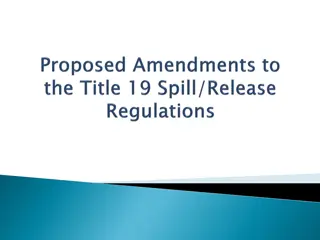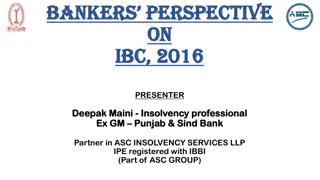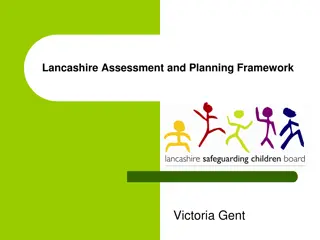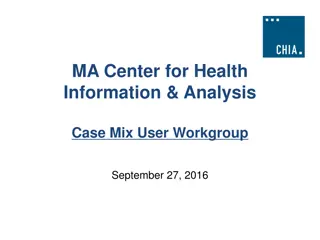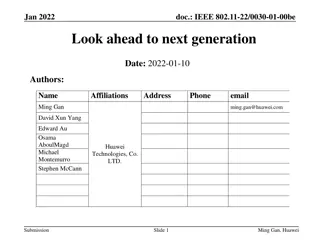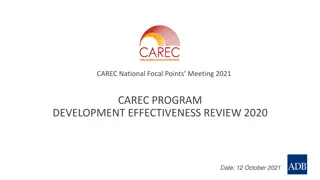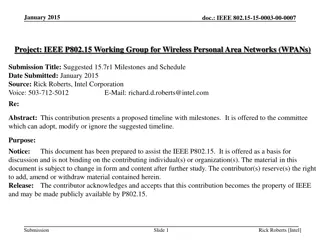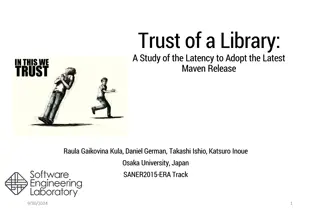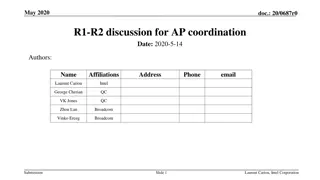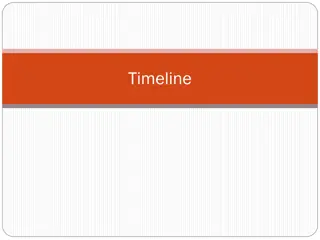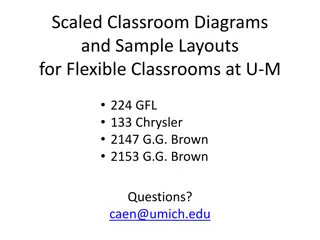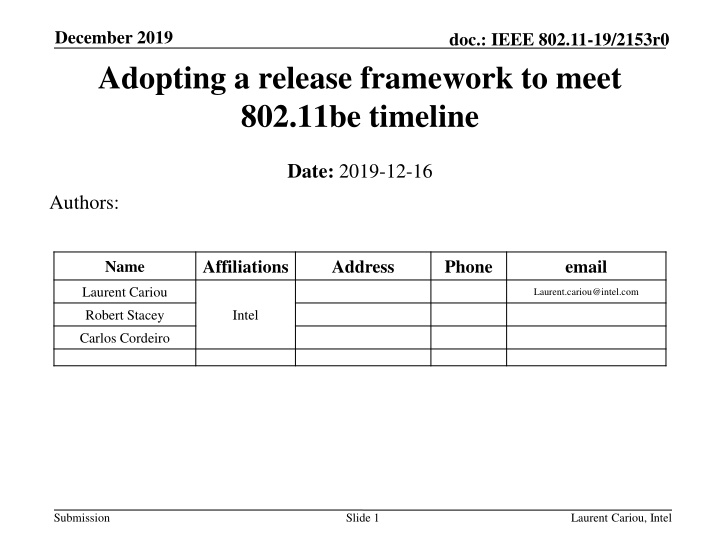
Meeting IEEE 802.11be Timeline: Adopting Release Framework
Explore the importance of meeting the IEEE 802.11be timeline by adopting a release framework. The document emphasizes the critical need to establish predictable release dates and feature sets early on to align with market expectations and competitive positioning. It highlights the challenges and proposed solutions to achieve the timeline effectively.
Download Presentation

Please find below an Image/Link to download the presentation.
The content on the website is provided AS IS for your information and personal use only. It may not be sold, licensed, or shared on other websites without obtaining consent from the author. If you encounter any issues during the download, it is possible that the publisher has removed the file from their server.
You are allowed to download the files provided on this website for personal or commercial use, subject to the condition that they are used lawfully. All files are the property of their respective owners.
The content on the website is provided AS IS for your information and personal use only. It may not be sold, licensed, or shared on other websites without obtaining consent from the author.
E N D
Presentation Transcript
December 2019 Adopting a release framework to meet 802.11be timeline doc.: IEEE 802.11-19/2153r0 Date: 2019-12-16 Authors: Affiliations Address Phone email Name Laurent Cariou Laurent.cariou@intel.com Robert Stacey Intel Carlos Cordeiro Submission Slide 1 Laurent Cariou, Intel
December 2019 doc.: IEEE 802.11-19/2153r0 Introduction Based on [1], 802.11be TG agreed on a timeline for 11be with the following key dates: D0.1 D1.0 Letter Ballot D2.0 LB The market is already building an expectation around these dates [5][6], and this will only become more important over time We believe it is critical to agree now on a development process that increase the chances this timeline can be met In this contribution, we re-iterate the importance to respect this timeline, evaluate how to achieve this and propose possible next steps. Sept 2020 March/May 2021 Mar 2022 Submission Slide 2 Laurent Cariou, Intel
December 2019 doc.: IEEE 802.11-19/2153r0 802.11be process and timeline [1] 11ac Pub Dec 2013 2018 2019 2020 2021 2022 2023 2024 July 2018 May 2024 December 2019 5 years EHT SG TGbe December 2019 EM ~1 year Sept 2020 December 2019 expected SFD Nov 2020 March/May 2021 May 2024 Nov 2022 Nov2023 D0.1 D1.0 D1.0 D3.0 D4.0 D5.0 SB: D5.0 Pub 6 months 7-8 months 2.5 years The term EM in this slide captures all the TG documents except the SFD and draft Submission Slide 3 Laurent Cariou, Intel
December 2019 doc.: IEEE 802.11-19/2153r0 Need to meet the agreed timeline (1/2) Importance to establish predictable release dates and feature set early on [2]: industry needs a stable and predictable release date and feature set to plan expensive development effort OEMs benefit from a predictable and regular upgrade cycle It is critically important for 11be and the Wi-Fi industry to respect this timeline, as it has major implications on: Competitive standing against competing technologies and their evolution cycles and marketing messaging Market expectations for new usages Product launch dates Identifying the feature set early to meet the approved timeline is critical more critical than the exact content of the feature set Submission Slide 4 Laurent Cariou, Intel
December 2019 doc.: IEEE 802.11-19/2153r0 Need to meet the agreed timeline (2/2) We just have 5 meetings (Jan, March, May, July, September 2020) before creating the first D0.1 draft. With current pace and with current scope, and based on learnings from prior amendments, achieving this is nearly impossible Here we present possible approaches to meet this timeline, and request members to constructively work to find a workable solutions to this problem Submission Slide 5 Laurent Cariou, Intel
December 2019 doc.: IEEE 802.11-19/2153r0 Different time constraints depending on features Similarly to previous PHY/MAC programs, it is expected that not all the features defined in 11be will be implemented in the first release of products Features show up in products based on releases (release 1, release 2, etc.), which are launched a few years apart This is true for both Wi-Fi and 3GPP markets The most stringent constraint to meet the timeline really is for features that are candidate to be included in the first release The specification of release 1 features needs to be ready and stable in 11be D1.0/D2.0 at the target dates. On the other hand, features that are more likely to be in future releases (release 2) of products can enjoy a more relaxed development timeline and become mature at a later stage. Submission Slide 6 Laurent Cariou, Intel
December 2019 doc.: IEEE 802.11-19/2153r0 Prioritization/releases as the way to meet timeline and market expectations We can overcome the timeline difficulties if we are able to identify as early as now the features that are the most likely to be implemented in first release of 11be products. We therefore propose to group the current 11be candidate features into 2 categories: a release 1 list and a release 2 list Defining such lists will allow: Prioritization of these topics in the agenda during task group and ad hoc group sessions until D2.0 Features in the release 2 list can still be discussed, and can be included in SFD. They are just deprioritized in the agenda as long as release 1 presentations are available Acceleration of the development of the draft and early draft comment resolutions by focusing on release 1 list Submission Slide 7 Laurent Cariou, Intel
December 2019 doc.: IEEE 802.11-19/2153r0 Release 1 list The release 1 list corresponds to the list of features that will need to have a mature specification in D1.0 Contributions on these features would be prioritized in 11be agenda, and the generation of D0.1/D1.0 would be triggered as soon as these features are considered mature and stable through a TG vote We could still allocate a small amount of time for R2 features if we see the need Only these features would be converted from SFD into spec text in D0.1/1.0 Comment resolution for D1.0/D2.0 would be focus only on those features Submission Slide 8 Laurent Cariou, Intel
December 2019 doc.: IEEE 802.11-19/2153r0 Release 2 list The release 2 list corresponds to the list of features that don't need to be mature in D1.0. These features could: Be included in 11be D1.0, but with little or no specification text Be only introduced in a later draft version (as we did in 11ax for Midamble (D3.0) and 6GHz related features (D4.0)) Be specified in a newly created and dedicated Release 2 task group 11be SFD could have 2 parts: release 1 and release 2 Release 1 part would be converted to spec text in D0.1/1.0 Release 2 part and features from Release 1 part that are immature would be converted to spec text in a later release or within another dedicated TG PHY design in R1 should consider forward compatibility for future R2 features. (e.g. adding hooks in preamble design) Submission Slide 9 Laurent Cariou, Intel
December 2019 doc.: IEEE 802.11-19/2153r0 Process for release 2 topics option 1 Release 2 features could be given the same priority as Release 1 features as soon as a major draft (e.g. D4.0) is generated (similarly to Midamble and 6 GHz features in 11ax D3.0 and D4.0) A selection procedure could look like this: Spec text contribution contribution contribution Spec text Spec text Add to SFD as R1? 75% Release 1 (Prioritized in agenda) CR CR CR CR Release 1 75% D5.0/ D6.0/ D7.0 D0.1/ D1.0/ D2.0 Detailed spec text 75% D3.0 D4.0 75% 75% 75% Technical contribution SFD 75% Spec text contribution contribution contribution Spec text Spec text Release 2 Release 2 75% After D1.0, R2 would progressively get more time for discussion in meeting Add to SFD as R2? Submission Slide 10 Laurent Cariou, Intel
December 2019 doc.: IEEE 802.11-19/2153r0 Process for release 2 topics option 2 Release 2 features could be specified in a newly created TG, selection procedure could look like this: EHT/11be TG Spec text contribution contribution contribution Spec text Spec text Add to SFD as R1? CR 75% D0.1/ D1.0/ D2.0/ D3.0/ D4.0/ D5.0 Release 1 (Prioritized in agenda) Release 1 75% Detailed spec text 75% Technical contribution SFD Release 2 Release 2 75% Add to SFD as R2? New Release 2 EHT TG Spec text contribution contribution contribution Spec text Spec text Release 2 Technical contribution CR 75% D0.1/ D1.0/ D2.0/ D3.0/ D4.0/ D5.0 SFD 75% Detailed spec text 75% Add to SFD as R2? Submission Slide 11 Laurent Cariou, Intel
December 2019 doc.: IEEE 802.11-19/2153r0 How to select features for release 1 There are many reasons to consider: Complexity/gain tradeoff Time to standardize Time/investment to implement Market needs Interest in the features Submission Slide 12 Laurent Cariou, Intel
December 2019 doc.: IEEE 802.11-19/2153r0 Candidate Release 1 list We believe that the 4 following high-level topics should be present in release 1 list, because collectively they offer a major product refresh (i.e., new Wi-Fi generation) and address expected use cases: 320 MHz bandwidth 4K QAM Multiple RUs to a single STA Multi-link operation Of course, depending on the evolution of a topic like multi-link operation, a second-level of details may be needed to prioritize within this topic If there is sufficient consensus on this, we could start with this for prioritization Submission Slide 13 Laurent Cariou, Intel
December 2019 doc.: IEEE 802.11-19/2153r0 Conclusion It is critically important for 11be and the Wi-Fi industry to stick to the approved 11be timeline, as it has major implications on competitive standing against competing technologies, market expectations for new usages, product launch dates The current 802.11 amendment development process does not cater to how the market works this is a problem that we need to address Timeline constraint is uniquely for features that are candidate for the first release of 11be products, as they need to be mature in early drafts We therefore propose to define a release 1 list of EHT topics and to prioritize in the agenda these topics: 320MHz, 4K QAM, Multiple RUs per STA, Multi-link operation For R2 features process, we present here 2 options but this can be discussed/decided later, and we want to focus discussion on R1 at this stage For now, all remaining candidate features are candidate for R2 Submission Slide 14 Laurent Cariou, Intel
December 2019 doc.: IEEE 802.11-19/2153r0 Straw Poll #1 Do you agree to define releases of features, and to allow the chair and ad hoc chairs of 802.11be to prioritize contributions and decisions related to release in the agenda, starting with release 1? Submission Slide 15 Laurent Cariou, Intel
December 2019 doc.: IEEE 802.11-19/2153r0 Straw Poll #2 Do you agree to include 320MHz, 4K QAM, Multiple RUs per STA and multi-link operation in 11be release 1 list? Submission Slide 16 Laurent Cariou, Intel
December 2019 doc.: IEEE 802.11-19/2153r0 References [1] IEEE802.11-19/0787r2, 802.11be Timeline Proposal [2] IEEE802.11-19/1259r1, A cascading process for major amendments https://mentor.ieee.org/802.11/dcn/18/11-18-1259-01-0000-a-cascading-process-for-major-amendments.pptx [3] IEEE802.11-14/0649r1, 802.11ax Timeline Scenarios [4] IEEE802.11-18/0968r0, TGax timeline [5] https://www.cnet.com/news/wi-fi-6-is-barely-here-but-wi-fi-7-is- already-on-the-way/ [6] https://www.u-blox.com/en/beyond/blog/guest-blogs/wi-fi-7-next- generation-wi-fi-technology Submission Slide 17 Laurent Cariou, Intel




